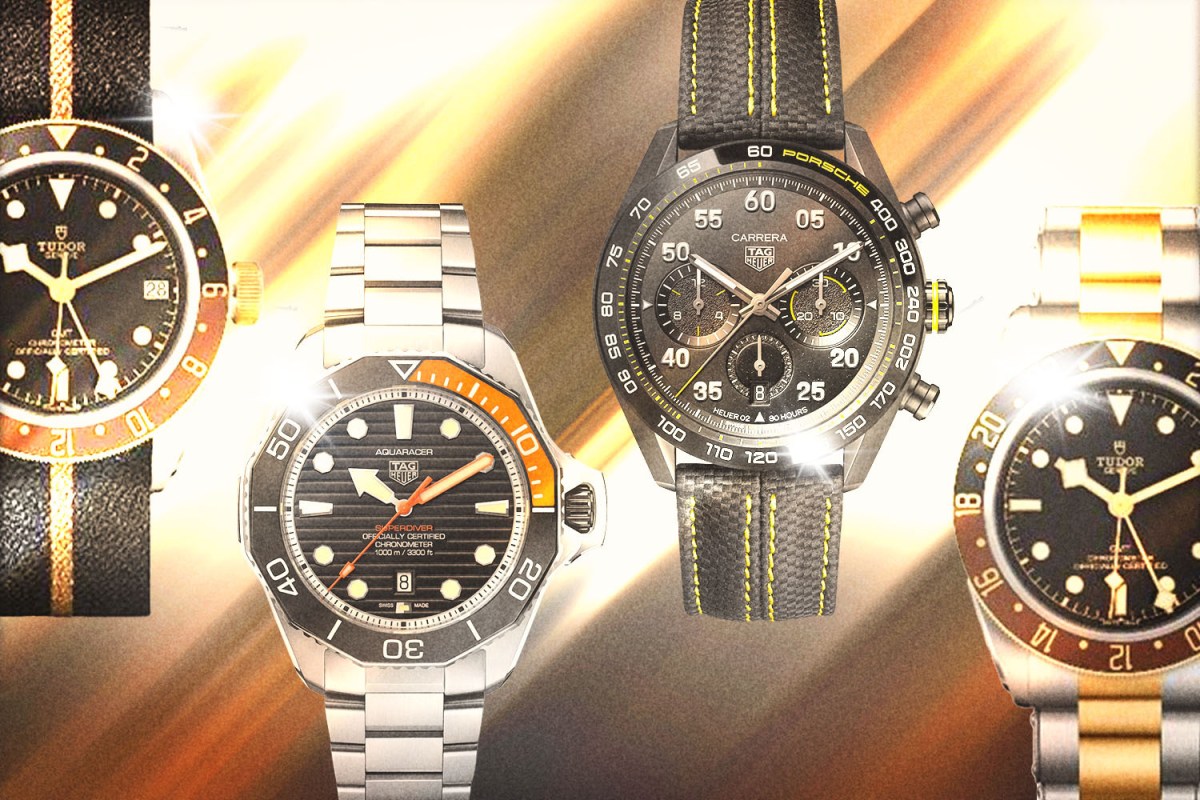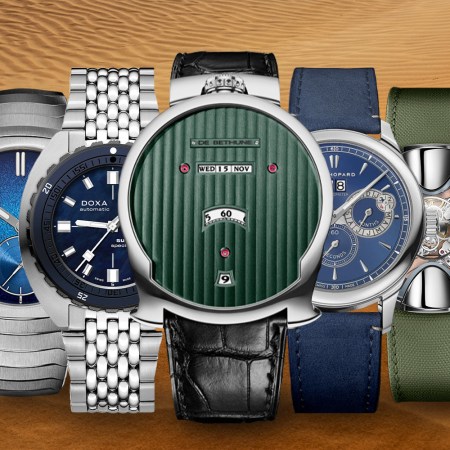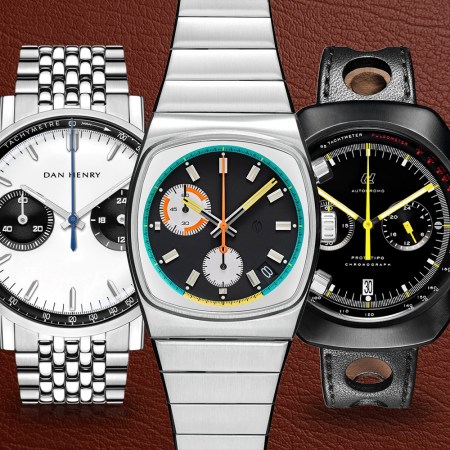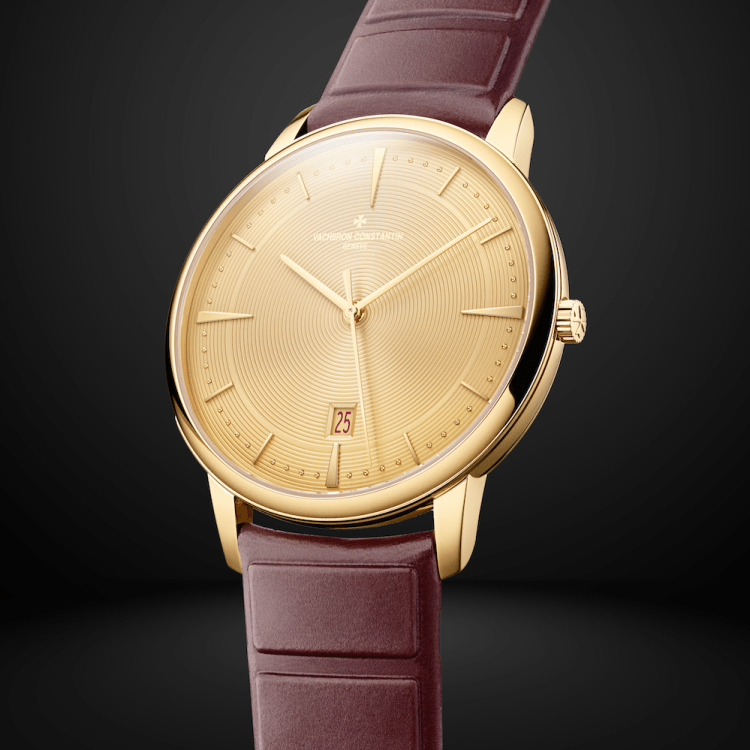Anddd we’re back!
Finally, after several years of pandemic-induced madness, the watch industry is gathering in person, in Geneva, for a week of horological conviviality. It’s been a minute — 2019 was the last time Watches & Wonders, one of the industry’s largest trade shows, met in person here at the center of the watchmaking world.
And boy, is it good to be back. There’s simply no substitute for seeing a watch in person, getting to hold it in your hand, try it on, and decide whether or not it’s truly all it’s cracked up to be. Largely catering to journalists, retailers and collectors, Watches & Wonders is nonetheless a hugely important event for the average watch collector or casual consumer, as it’s where all the most important brands release their new wares for the year.
So without further ado, let’s dive into some of the best new timepieces we’ve seen thus far…
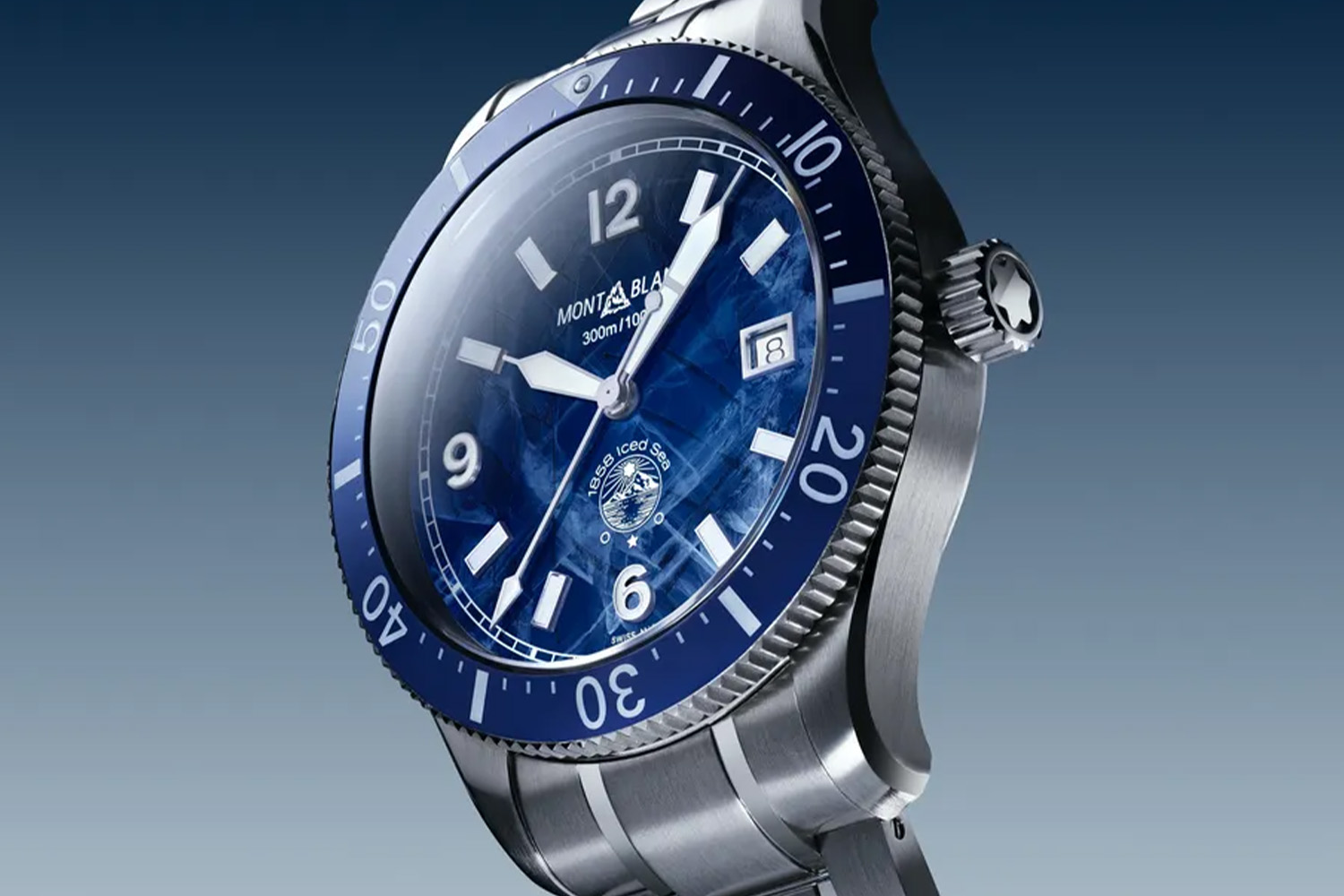
Montblanc
As Montblanc, the famed maker of fine watches, leather goods and writing instruments also controls Minerva — one of Switzerland’s most historic, storied movement manufactures — its wares are split between more modern offerings and vintage-inspired, complicated pieces that pull from Minerva’s legacy. The brand’s 2022 novelties include a nice mix of both, and — for the first time — a dive watch! (The show also marks the first of newly installed Managing Director of Watches, Laurent Lecamp.)
Said diver is the 1858 Iced Sea Automatic Date, a model that pulls design language from classic models of the 20th century. Inspired by the glacial lakes of the Mont-Blanc Massif in Switzerland, its dial (available in blue, green, and black) appears as a network of glacial crystals. The watch is accompanied by an interchangeable stainless steel bracelet with a double- deployant buckle and features a 41mm steel case, a bicolor ceramic dive bezel, and the Sellita SW200 automatic movement with date function. With pricing between $2,975-$3,190, the 1858 Iced Sea Automatic Date is a welcome addition to the mid-price segment and an exciting first for a company whose wares tend more toward complications or dress watches.
Continuing with the tool watch theme, feast your eyes on the new 1858 GMT Automatic Date ($3,515-$4,100). Consumers are more and more finding themselves spoiled for choice when it comes to mid-price GMT watches, but this offering is slightly different: It uses a unique system in which a red square indicating the second time zone moves around the periphery of the dial, while the black or blue anodized aluminum bezel with 24-hour scale allows the wearer to quickly indicate if it’s day or night. A titanium case back shows an engraving of the continents and oceans as well as the cities in each of the watch’s 24 time zones, effectively adding a sort of world time complication. Housed in a 42mm stainless steel case, it’s powered by the automatic Calibre MB 24.33 movement.
A couple of high-end complications make full use of Minerva’s savoir faire — the 1858 Minerva Monopusher Chronograph Red Arrow LE88 and the 1858 Secret Minerva Monopusher Chronograph LE18 & LE58. Inspired by early Minerva pilot’s watches from the 1920s and 1930s, the first model features a fluted bezel in 18K white gold adorned with a red arrow in reference to vintage models and to the Roman goddess Minerva, whose spear featured a red tip. Using the bezel, it’s possible to measure elapsed time, while the dual-register chronograph with tachymeter and telemeter scales can be used to time shorter events. Housed in a 42mm stainless steel case and powered by the Calibre MB M13.21 hand-wound movement with column wheel, it’s a limited edition of 88 pieces and lists for $30,500.
The 1858 Secret Minerva Monopusher Chronograph LE18 & LE58 are the true show-stoppers, however. While it appears that this (in two metals) is a fairly conventional monopusher chronograph with a skeletonized dial, this isn’t actually the case: The hand-wound MB 16.29 movement has been entirely flipped over so that it’s visible via the dial side, which necessitated adding components so that the direction of the hands could be reversed. Montblanc maintains that something like this has never been done in Minerva’s 165 years of watchmaking history.
Limited to 18 pieces in Lime Gold ($48,000) and 58 pieces in steel ($33,500), both measure 43mm in diameter and come fitted with fluted bezels.
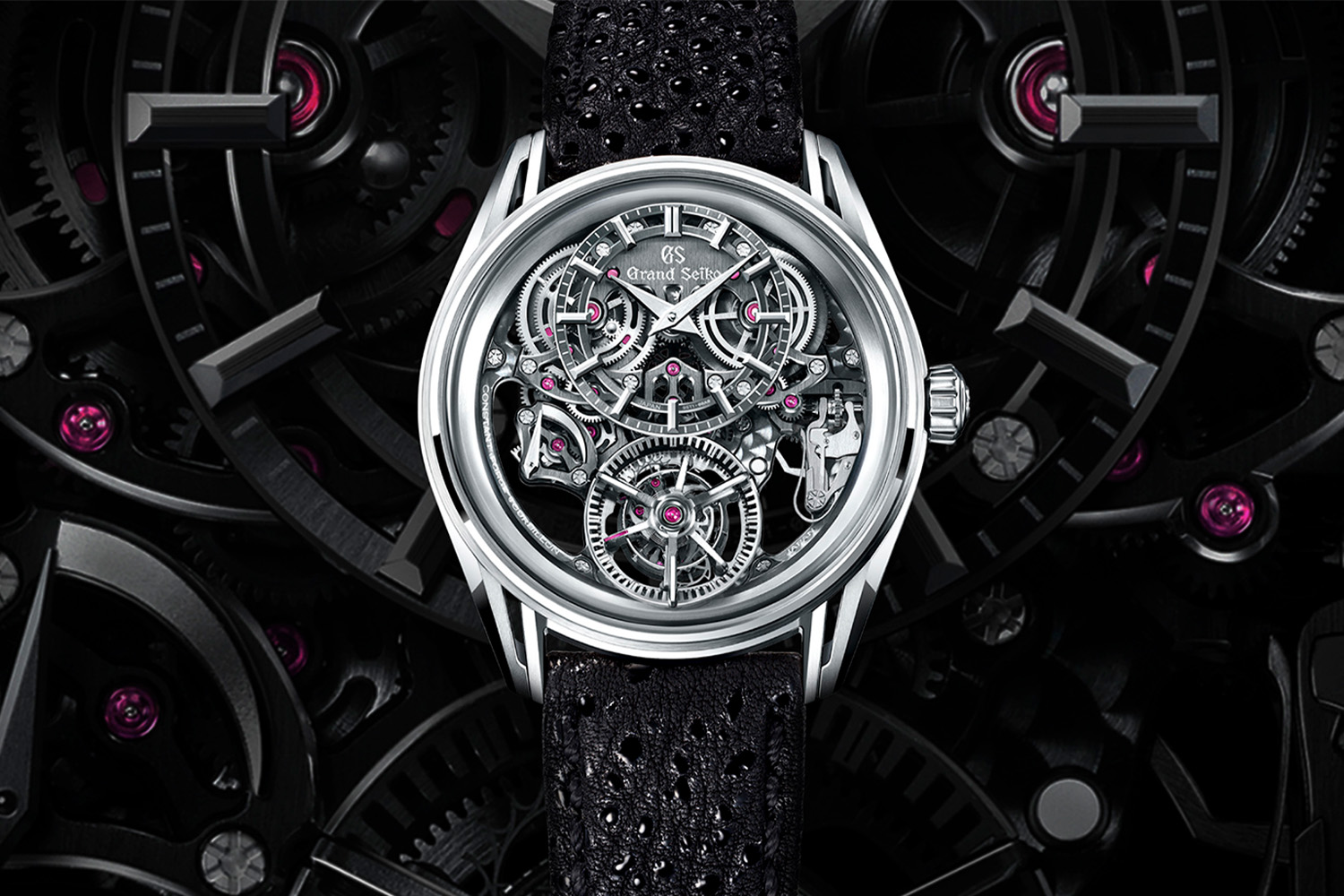
Grand Seiko
Everyone’s favorite purveyor of fine Japanese watchmaking brought out the big guns this year. The piece de resistance is an absurdly complicated model with a constant force mechanism and a tourbillon, though worry not — there are more down-to-Earth pieces which don’t necessarily require taking out a second mortgage in order to buy.
But back to that constant force tourbillon thing, the Grand Seiko Kodo Constant-force Tourbillon (370,000 EUR). In short, it’s wildly cool. Housed in a 43.8mm case that features both platinum and Brilliant Hard Titanium components, it’s accurate to well within COSC specs and has a power reserve of 72 hours. Via a box-shaped sapphire crystal and a see-through case back, it’s possible to view the Calibre 9ST1 movement in all its glory. A limited edition of 20 pieces, it comes equipped with possibly the coolest calfskin strap we’ve ever seen, finished in a pattern that makes it appear like stingray leather.
Expanding its Evolution 9 collection, G.S. has released several new Spring Drive-powered SKUs that are sure to excite the tool watch enthusiast — two GMTs, two chronograph-GMTs, and a dive watch. Each features a high-intensity titanium case and bracelet, Lumibrite lume and a crown guard specifically designed to keep out of the way during sports and physical activity. Lugs have been widened, cases have a low center of gravity for comfort, and handsets are bolder. Even the bezel numeral font is new and specially designed for the collection.
Of the two Spring Drive GMTs (8,500 EUR), one features a handsome black dial, while the other has a special light grey patterned dial with a texture inspired by winter mist in the Shinshu region of Japan. The Spring Drive Chronograph, meanwhile, is available in either a black dial (11,500 EUR) or a special, limited-edition blue dial of 700 pieces (12,500 EUR). Each features a 12-hour chronograph in addition to a rotating bezel, 24-hour dial scale and a GMT hand, the combination of which allows it to track three time zones.
Lastly, the SLGA015 (11,800 EUR) is a 200m water-resistant dive watch powered by the Spring Drive Caliber 9RA5. With a black dial inspired by the Kuroshio Current — aka the Black Stream — it’s accurate to +/- 10 seconds per month and features a 5-day power reserve. A 43.8mm titanium case and a clever dive extension on its matching bracelet round out the package.
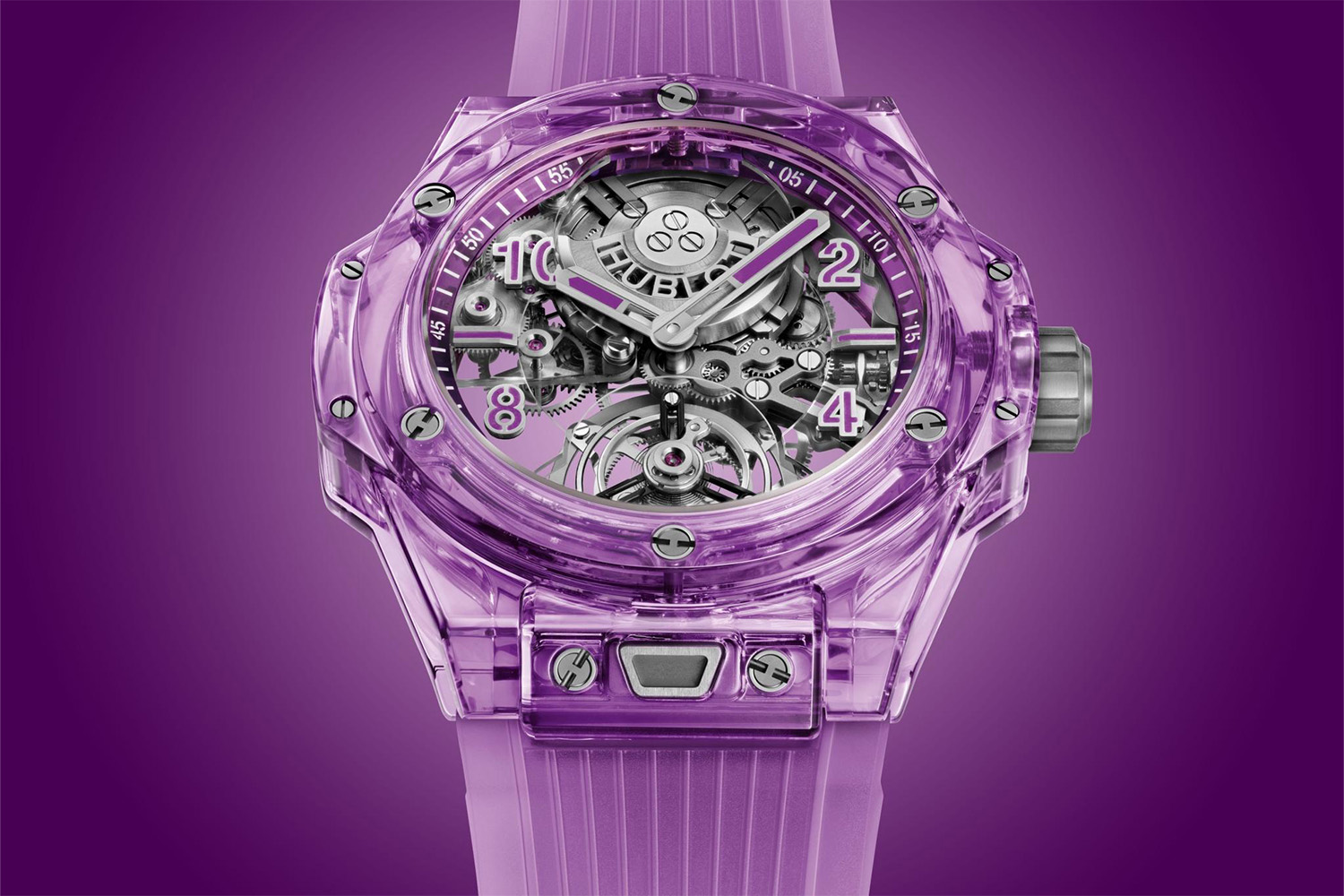
Hublot
Hublot dropped so many novelties this year that it’s frankly difficult to keep track of them all. From wildly colorful Big Bang models to Classic Fusion pieces with integrated bracelets to complicated 5-day tourbillon watches, Hublot made a good show of this year’s show!
Let’s start with the most visible piece of the new lineup — and we mean that literally because it’s bright purple and made of polished sapphire crystal. It’s the Big Bang Tourbillon Automatic Purple Sapphire ($200,000). 44m in diameter, it features a tourbillon cage at 6 o’clock, purple Arabic indices and a matching purple handset. Limited to 50 pieces and powered by the automatic HUB6035 in-house movement, it’s a hell of an attention-grabber due to its case construction, which is manufactured from purple-colored synthetic sapphire.
Slightly less loud is the Square Bang Unico, a series of 42mm chronographs available in titanium, titanium/ceramic, gold, gold/ceramic, or all black configurations ($23,100-$43,100). Representing a completely new case design for Hublot but inspired by the longstanding Big Bang, the new watches form The Shaped Collection, which will sit alongside the Spirit of Big Bang in the Hublot lineup.
The design does away entirely with a conventional dial, instead revealing the Unico automatic manufacture movement beating away within. The display features a bi-compax chronograph layout with large, partially skeletonized hands and a visible column wheel at six o’clock, while the watch’s case is modular — it features a central section upon which upper and lower plates are then affixed, allowing for myriad configurations in different metals. Making a square case water resistant is a constant challenge for watchmakers, but Hublot nevertheless is able to guarantee 100m of water resistance in each reference.
If a “luxury sports watch” with an integrated bracelet is more your bag, you should absolutely check out the Classic Fusion Orlinski Bracelet ($15,700-$45,200). Celebrating the work of French artist Richard Orlinski, this series consists of a 40mm titanium case with or without pave diamonds and a time-only face powered by the automatic HUB1100 in-house movement. Each has a gorgeous, faceted dial in silver or black and a bracelet inspired by Orlinski’s work — H-shaped links call to mind the Hublot logo, while chamfered and mirror-polished facets form a complex, sculptured shape that consists of 83 parts.
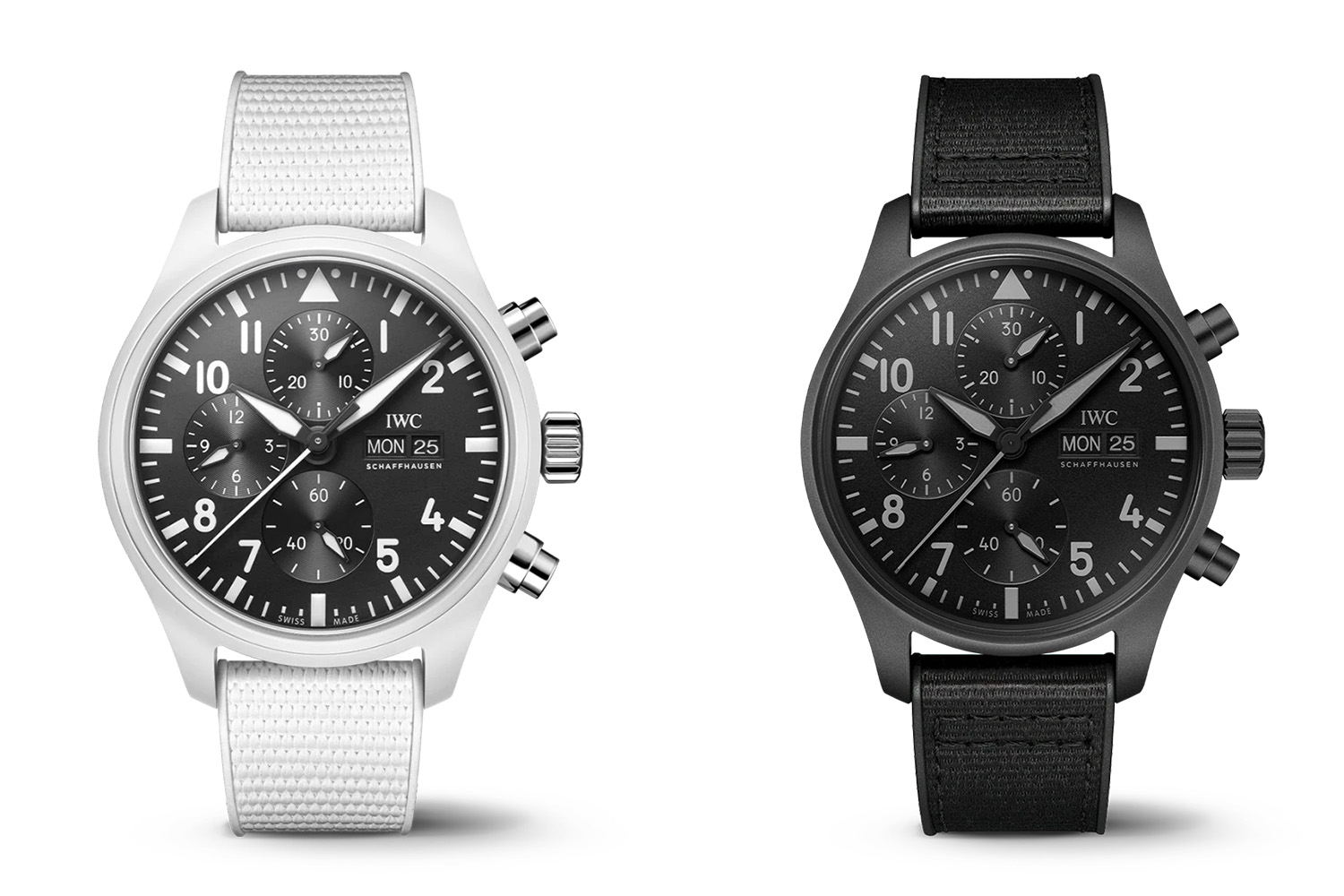
IWC
This year was more of an iterative time for the International Watch Company, but their wares were nevertheless show favorites. Colorful pilot’s watches abound, but we’re not referring to watch dials — we’re talking about watch cases.
First up is the Pilot’s Watch Chronograph 41 Top Gun Ceratanium. This is the first time IWC has produced a 41mm pilot’s chronograph in its proprietary, ultra-tough material, and this includes the watch’s crown and pushers. In fact, even the sapphire case back is tinted, resulting in a subdued, matte-black look that’s dripping with tactical cool. Inside, the watch is powered by the in-house, automatic Caliber 69385 with column-wheel, which translates on the military-inspired dial to a triple-register layout with day and date displays. Fitted to a matching black fabric strap, it retails for $12,600.
More striking is the Pilot’s Watch Chronograph Top Gun Edition “Woodland” with a dark green ceramic case inspired by the colors of pilot’s uniforms at the famed Top Gun flight academy. But this coloring doesn’t just extend to the watch case; IWC went through a painstaking process to match the watch’s hands, lume, pushers, crown, and rubber strap with textile inlay to the same green shade. Powered by the IWC Caliber 69380 automatic chronograph movement and limited to 1,000 pieces, it carries a price of $10,700.
Maybe white is more your thing? Check out what has to be one of the coolest IWC colorways we’ve seen in the last few years: The Pilot’s Watch Chronograph Top Gun Edition “Lake Tahoe” features a blinding white case inspired by white US Navy uniforms and the winter landscape around Lake Tahoe. 44mm in diameter, its case is white ceramic with a titanium case back, while it’s paired to a white rubber/textile strap and features steel chronograph pushers and a steel crown. Like the “Woodland,” it’s powered by the IWC Caliber 69380 automatic chronograph movement, is limited to 1,000 pieces and carries a price of $10,700.
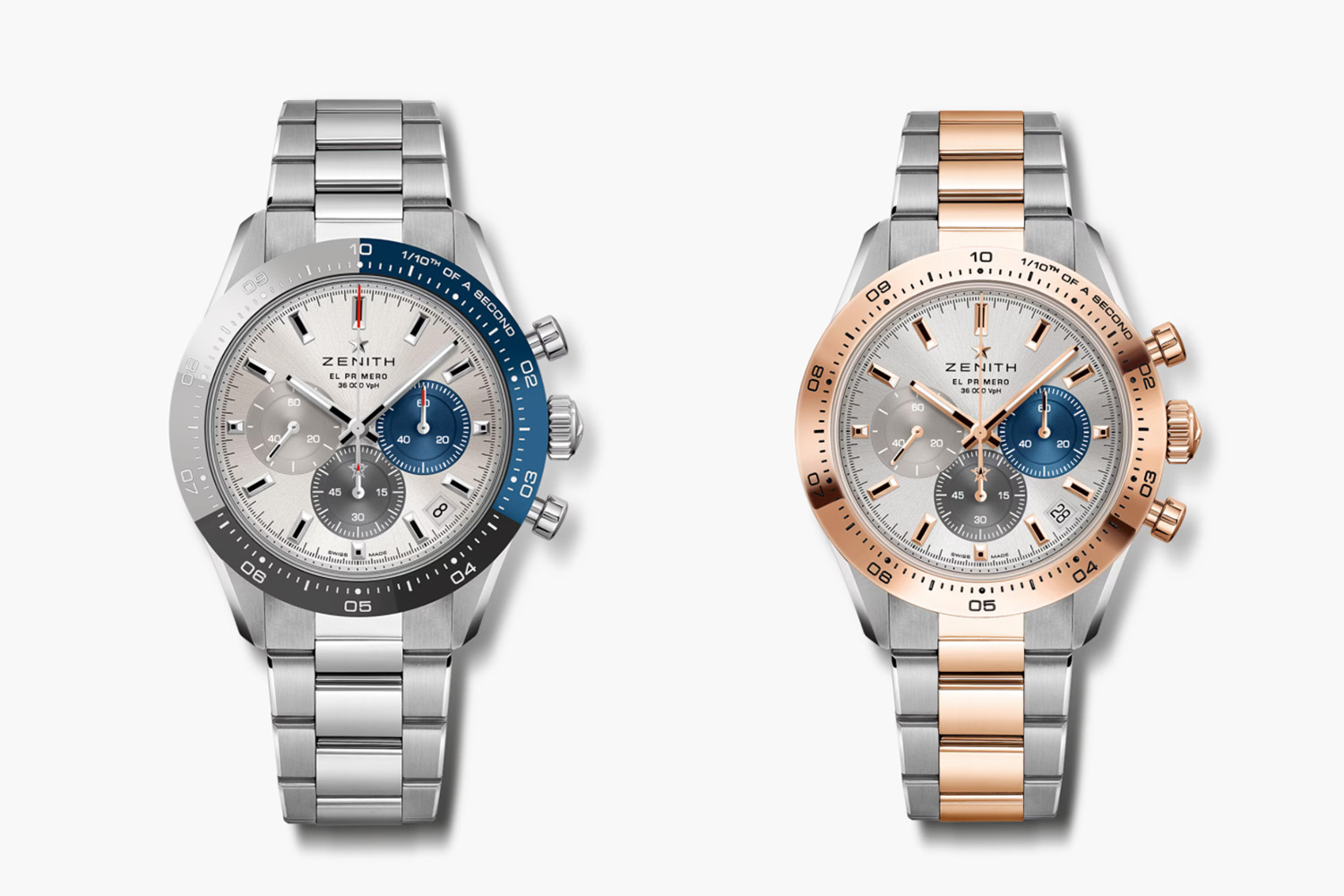
Zenith
Designing a watch with an openworked dial — which exposes certain of the movement components — that doesn’t look overly kitschy is a tough proposition. Zenith has proven that it can nail this aesthetic, however.
The new Chronomaster Open removes just enough of the dial such that it doesn’t feel garish, giving the wearer a view to part of the El Primero 3604 movement beneath. Housed in a 39.5mm stainless steel ($9,500-$10,000) or rose gold ($21,300) case and featuring either a matte black or or white dial, it’s a decidedly handsome piece that incorporates classic El Primero qualities, such as the tri-color chronograph layout. Steel versions are available on either a Cordura-effect rubber strap or a matching steel bracelet, while the gold version ships on a blue calfskin leather strap.
The Chronomaster Sport — Zenith’s Daytona competitor — also received new livery this year in the form of two-tone ($17,000) and all-gold options ($37,200). In steel and rose gold, the two-tone version features a silver dial with tri-color chronograph layout and a matching bracelet paired to a 41mm case, while the all-gold version has either a white or black dial and matching all-gold case. Both are powered by the automatic El Primero 3600 movement with 1/10th-second functionality.
But wait — there’s more. There’s also a special Boutique Edition of the steel Chronomaster Sport that features the classic tri-color chronograph layout combined with a cool, tri-color ceramic bezel. Yup, you heard that right — the bezel itself is silver, blue and black! It’s paired to the CS’s 41mm stainless steel case and is of course powered by the Cal. 3600. At $12,800 on steel, it’s almost $3,000 more than the standard steel model, which is nothing to scoff at. But it’s oh-so-beautiful…
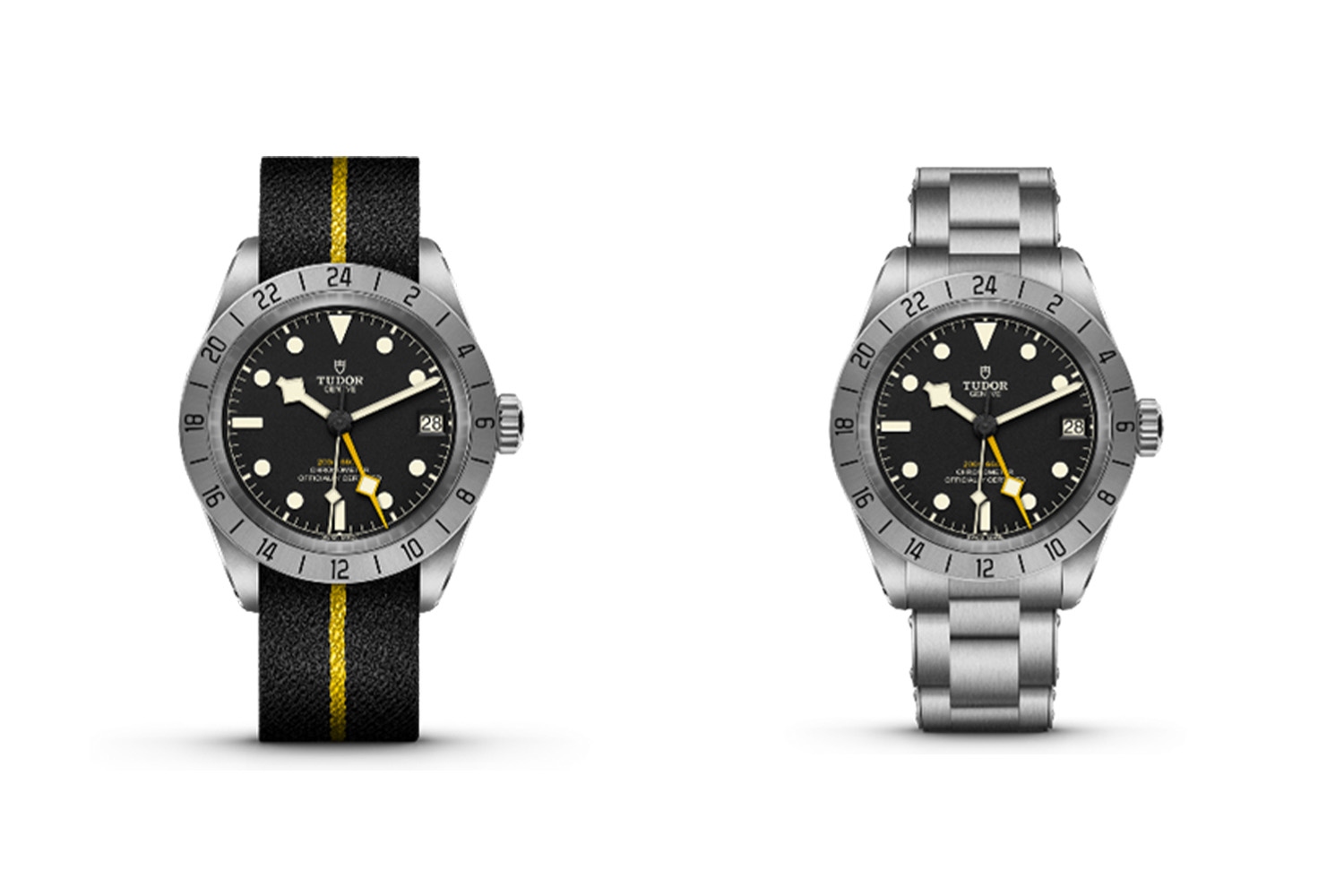
Tudor
Rolex’s sister brand is a perennial favorite of die-hard collectors and newbies alike. Why? The Swiss brand manages to combine the best of Rolex engineering with its own idiosyncratic design sensibilities, all at prices that, while they certainly live firmly within luxury territory, are worlds more affordable than those from the Crown.
For years, Tudor die-hards have been clamoring for a “Black Bay 58 GMT” — basically, a more compact version of the 41mm Black Bay GMT than hews closer to the case profile of the Black Bay 58. Well, we sort of got it, albeit in a slightly unexpected form: Meet the new Black Bay Pro ($3,675-$4,000). An entirely new model for 2022, it’s housed in a 39mm stainless steel case and features a fixed 24-hour bezel with a GMT function, powered by an in-house movement with an independently adjustable hour hand.
Rolex die-hards will no doubt catch on to how closely this watch resembles the famed Explorer II — similarly to how the Black Bay GMT is a rough analogue of the GMT Master. It’s interesting that Tudor chose to continue down this road and pull design language from its big brother brand, but keep in mind that Tudor doesn’t have a vintage GMT-equipped model of its own — a factor that no doubt informed its decision making. Even so, the prospect of another GMT-equipped model in the modern catalog for under $5,000 is intensely exciting. Hell, the prospect of another sub-$5K GMT-equipped watch under 40mm with true GMT functionality full stop is exciting. Overall, we have to applaud this release, the derivative design notwithstanding.
Other Tudor releases include two-tone, steel and gold versions of the Black Bay GMT ($4,300-$5,500); the Black Bay S&G (Steel and Gold) with a two-tone case and champagne-colored dial ($6,000-$7,250); new S&G versions of the Black Bay 31/36/39/41 (price varies by size); and new versions of the ladies’ Tudor Royal with integrated bracelet and diamond-set bezel ($3,450-$4,725).
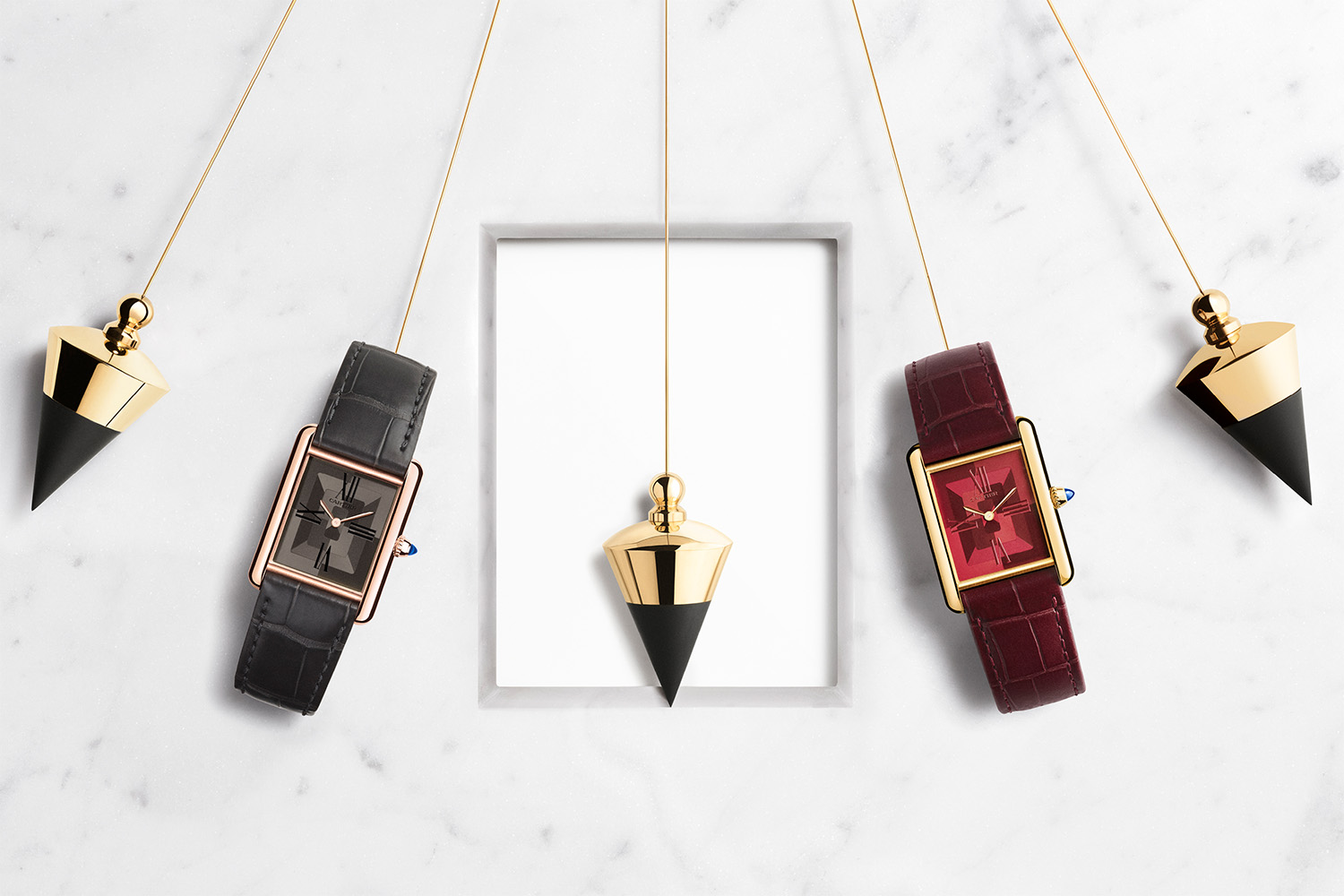
Cartier
The world’s most beloved jeweler scored points last year with the release of the new Tank Must, a reimagined, updated version of the 1970s/1980s entry-level Tank powered by a quartz movement. This year, the maison introduced new versions of the Must as well as fresh takes on the classic, manually-wound Tank Louis Cartier.
So what’s new about this year’s Must? Last year’s references included both classic “Roman” dials as well as colored lacquer dials that directly recalled funky 1970s/1980s versions. This year, we woke up to a handsome black-dialed lacquer watch in two sizes, Small and Large. Both feature a black lacquer dial with hour and minute hands, a steel case, and the iconic Cartier cabochon crown. Paired to black alligator leather straps, they’re understated, elegant and handsome. In short — classic Cartier. (Price TBD, but we can imagine they’re somewhat in line with last year’s lacquered Must models, around $3,000.)
The new Louis Cartier models make use of last year’s rectangle-within-a-rectangle motif in red and anthracite grey. Powered by the manually-wound 1917 MC movement with 38 hours of power reserve, each is made slightly differently: The red version is lacquered, while the grey version is galvanized, after which each receives a glossy decal to accentuate the Roman numerals. This multi-step process makes for extremely dynamic dials that only solidify Cartier’s reputation as not only a first-rate jeweler, but also, a top-notch watchmaking maison. (Pricing TBD, but we’re assuming $13,000+.)
A sleeper hit that lies somewhat between these two collections is a solid-gold Tank Louis Cartier in Large size with a manually-wound movement (Pricing TBD). And if the Tank isn’t quite your thing, you’re still in luck; Cartier released no less than three new versions of the Santos-Dumont, one of the world’s earliest pilot’s watches. Available in burgundy and platinum (limited to 150 pieces, price TBD), beige and gold (limited to 250 pieces, price TBD), or black and steel (unlimited, price TBD), all three are in the Large size at 31.4mm wide and are powered by the manufacture Calibre 430 MC manually-wound movement. Handsome, thin at just 7.3mm and timeless, they’re great additions to the Santos-Dumont collection. (Especially, in our humble opinions, the steel version with black dial and black lacquer bezel — which is about as “tactical” a Cartier watch as you can buy.)
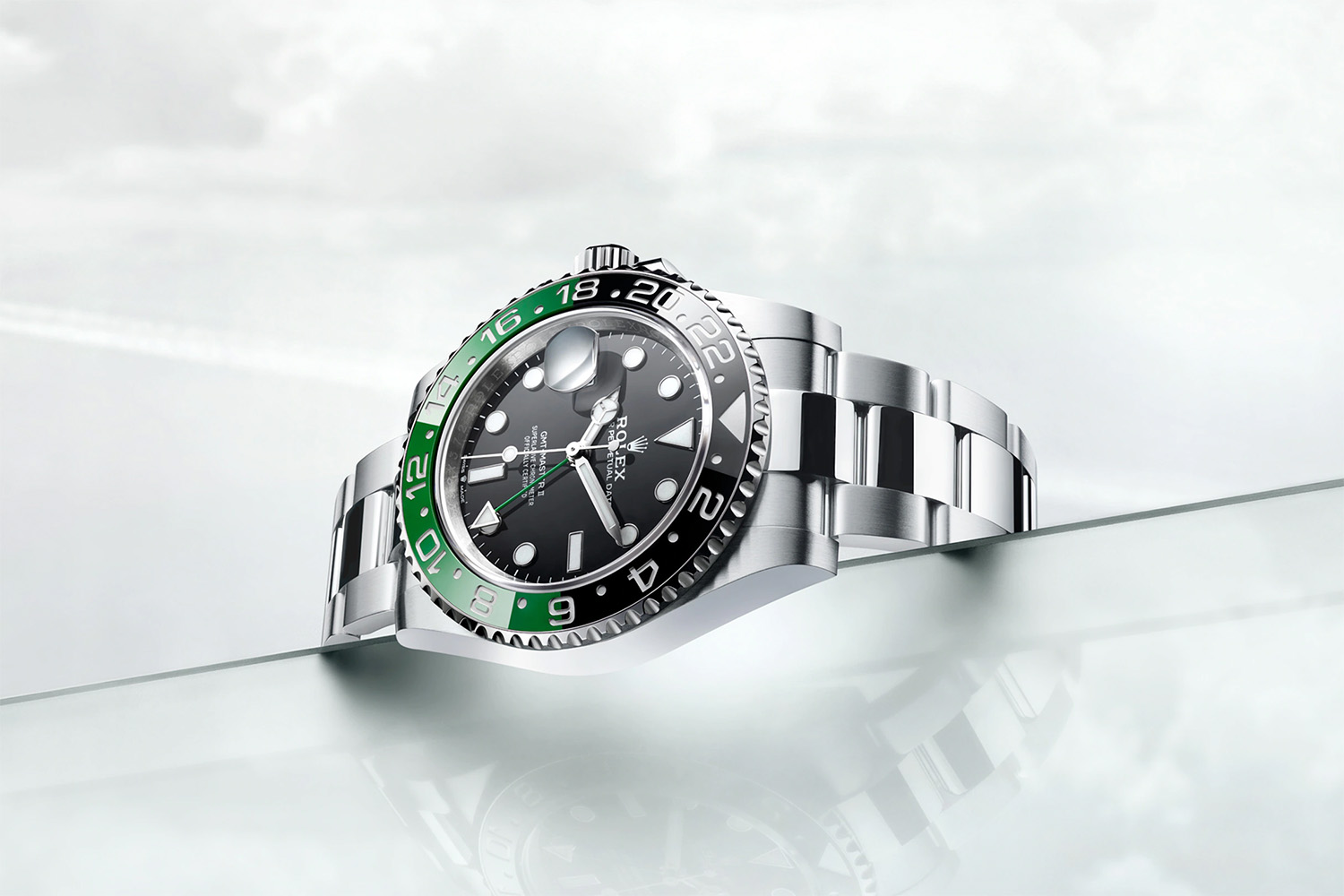
Rolex
By looking back at the history of important models — especially release dates — it’s somewhat possible to predict new releases for the big watch brands. (Think: last year’s update to the Explorer II, which celebrated its 40th anniversary in 2021.) However, this year’s biggest drop is one that the watch world didn’t see coming: A “destro” (left-handed) version of the GMT Master II.
This southpaw two-timer moves the winding crown and date window to 9 o’clock and adds a green-and-black Cerachrom bezel. Why the reconfiguration? The immediate argument that comes to mind, of course, is that this is a model dedicated to all those poor lefties out there who have to make their way through a right-handed world. However, PSA — Rolex crowns are chunky. I have a permanent divet in my left hand from 20 years of wearing a Submariner and would welcome the idea of a destro watch that doesn’t dig into my skin 24/7! In short, this is absolutely a watch that your average righty would enjoy.
Powered by the automatic Rolex Calibre 3825, the GMT Master II reference 126720VTNR features a 40mm steel Oyster case, 100m of water resistance via a Triplock crown, and is available on either an Oyster or Jubilee bracelet (CHF 10,500).
Another big update comes in the form of a new Air King, the reference 126900. Given crown guards for the first time and the more modern automatic Rolex Calibre 3230 movement, the 126900 still features the somewhat controversial combination 3-6-9 and 5-minute scale executed against a black background — an inspiration taken from instrument dial clusters. (For those who are counting, Rolex added a “0” before the “5” on the minute scaling, balancing the dial’s appearance somewhat.) This watch is always going to be an acquired taste, but the Air King is a classic entry-level model in the Crown’s catalog, and we’re more than happy to see it get an update.
But we know what you’re thinking — all these incremental releases are nice and all, but where’s my baller Rolex? Where’s my gold Rollie? Well, how about a solid, 18K yellow gold Yacht-Master 42 on an Oysterflex bracelet? Featuring a black lacquer “maxi” dial with date window at 3 o’clock and a bi-directional 60-minute Cerachrom bezel, it’s powered by the time-and-date, automatic Rolex Calibre 3235 movement and represents the “luxury” version of a classic Rolex sports watch (CHF $27,000).
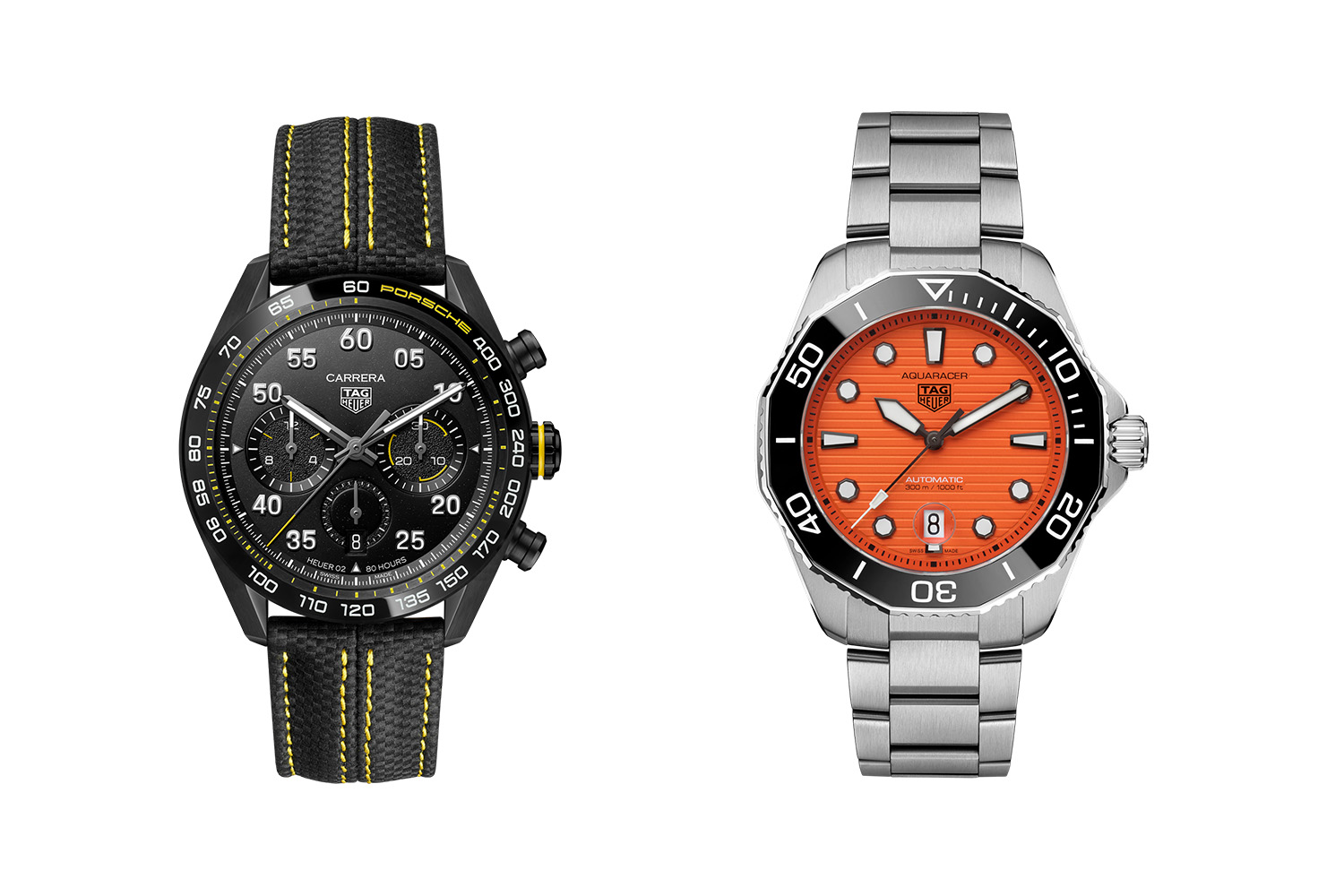
TAG Heuer
TAG Heuer may be the darling of the youthful, affordable end of luxury watchmaking, but that doesn’t mean it doesn’t have decades of classic models to call upon, which it often releases to much fanfare. This year, the brand updated several of its beloved Aqauracer SKUs at around the $3,000 mark, but its most exciting release may be a new version of its iconic Monaco made in partnership with Gulf.
This new Monaco Gulf Special Edition ($7,050) is, for the first time, powered by TAG’s own in-house Heuer 02 automatic chronograph caliber. Available beginning in May of this year, it features the famed Gulf racing livery, updated in dark blue, turquoise and orange. For the first time, these colors are repeated on the watch’s sub-counter at 3 o’clock, with the watch’s opaline sunray brushed dial simply pops against the steel and brushed rectangular case. If you’re a motosport fanatic, this is the new TAG Heuer for you.
Continuing the motorsports theme, the brand released a new Carrera X Porsche Limited Edition chronograph ($7,050) in black with yellow accents. (This partnership, dating to 2021, unites two powerhouse names in watchmaking and motorsports — fans of one are often fans of the other!) Powered by the Heuer 02 automatic chronograph movement, it features a 44mm, black DLC-coated steel case with a triple-register chronograph layout. Despite its racing use case, it’s still water-resistant to 100m and features a textile leather strap with stitching inspired by Porsche seat upholstery.
But TAG Heuer doesn’t just make racing chronographs — their dive watches have become more and more popular in recent years as the brand expands its market share beyond its automotive roots. The new Aquaracer Professional 1000 Superdiver ($6,650) is a completely overengineeed diver featuring, for the first time, the inclusion of the automatic, COSC-certified TH30-00 caliber from Kenissi, an important Swiss movement manufacture. Water-resistant to 1,000m, it features a 45mm titanium case with a black and orange ceramic unidirectional dive bezel and matching titanium bracelet. It even features a helium escape valve, should you fancy some casual saturation diving.
As for the more affordable wares for which TAG Heuer is famed, there’s a new Aquaracer Pro 300 Orange Diver ($3,300) with — you guessed it — an orange dial, plus a 43mm stainless steel case. Additionally, there’s an all-black Aquaracer Pro 200 Solargraph ($2,950), the brand’s first solar-powered watch with a caliber from La Joux-Perret. Housed in a DLC-coated case and featuring a wildly cool carbon and green Super-LumiNova bezel, it’s a big step forward for the brand both in terms of technology and industrial design.
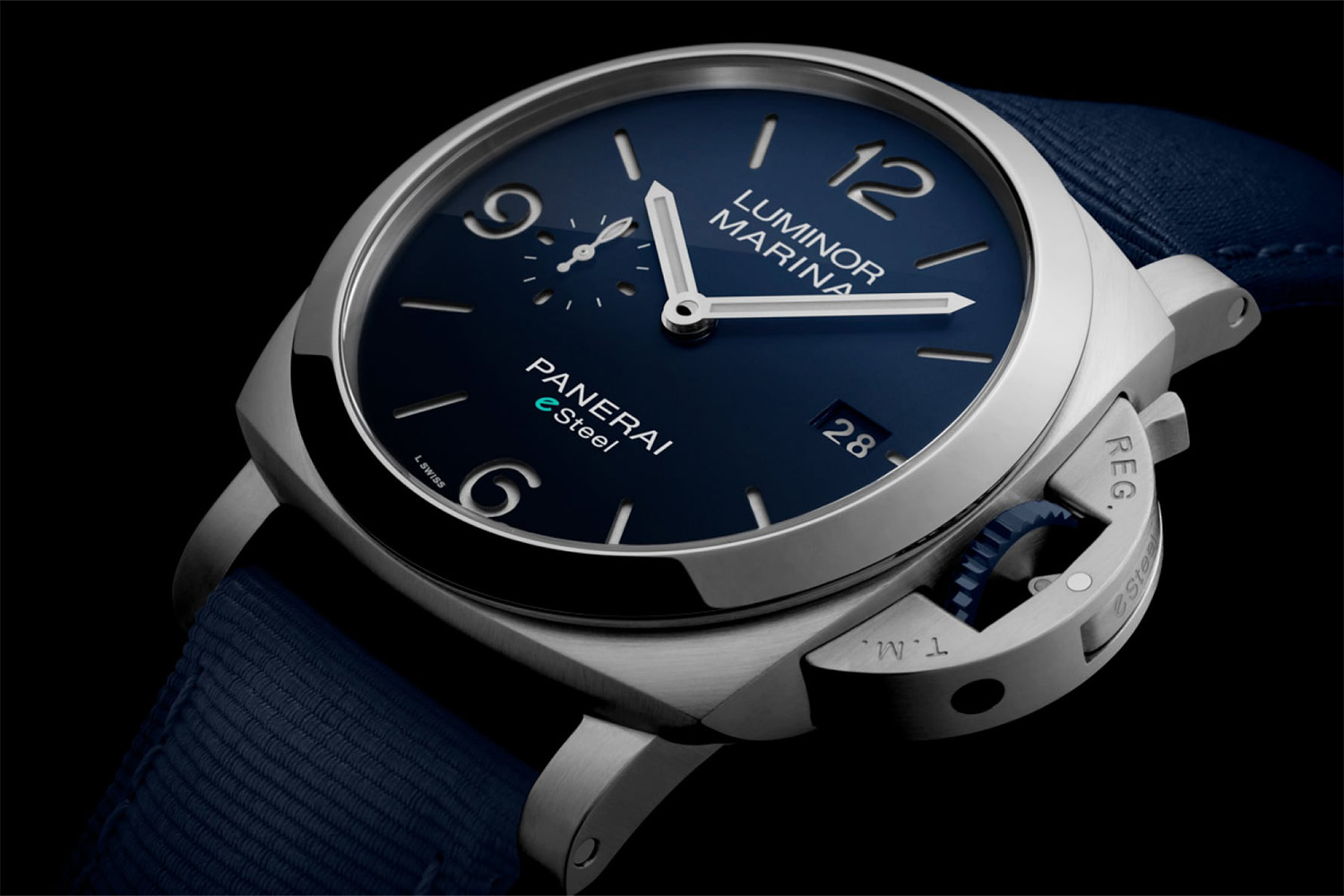
Panerai
Everyone’s favorite maker of oversized, professional dive watches is bringing the heat this year in the form of new 44mm versions of its Submersible line (CHF 9,000). Available in white or black dials with steel cases or in a blue dial with a Carbotech case, each features Panerai’s patented crown-lock mechanism, a date window at 3 o’clock, running seconds at 9 o’clock, a unidirectional, rotating dive bezel, the automatic Panerai P.900 movement, and a matching rubber dive strap. These 44mm versions join 42mm and 47mm SKUs, effectively making them the “Goldilocks” size in the Submersible catalog. (There’s also a special E-Steel “Blu Profondo” version (CHF 10,900), which puts sustainably sourced materials at the fore of the design, as well as two other e-Steel models with green or grey dials at the same price.)
Other highlights include a special Luna Rosa version (CHF 9,300) of the above watches, a limited edition of 1,500 pieces in celebration of the 37th America’s Cup. And if you’re so jaded that you need something even more special and limited in nature to get your blood pumping, check this out: the Luminor Goldtech Calendario Perpetuo, a limited run of 33 pieces whose purchase includes a trip to Florence to experience Panerai watchmaking firsthand.
As you may have surmised, this is a perpetual calendar — a watch that tracks, in this case, the day and date without the need for manual adjustment, and also includes a day/night indicator. Featuring a 44mm Goldtech case, it has a wildly cool, transparent sapphire dial that allows you view the day and date wheels beneath. Of course, one pays handsomely for the privilege of wearing this watch and traveling to Florence — pricing is CHF 78,000.
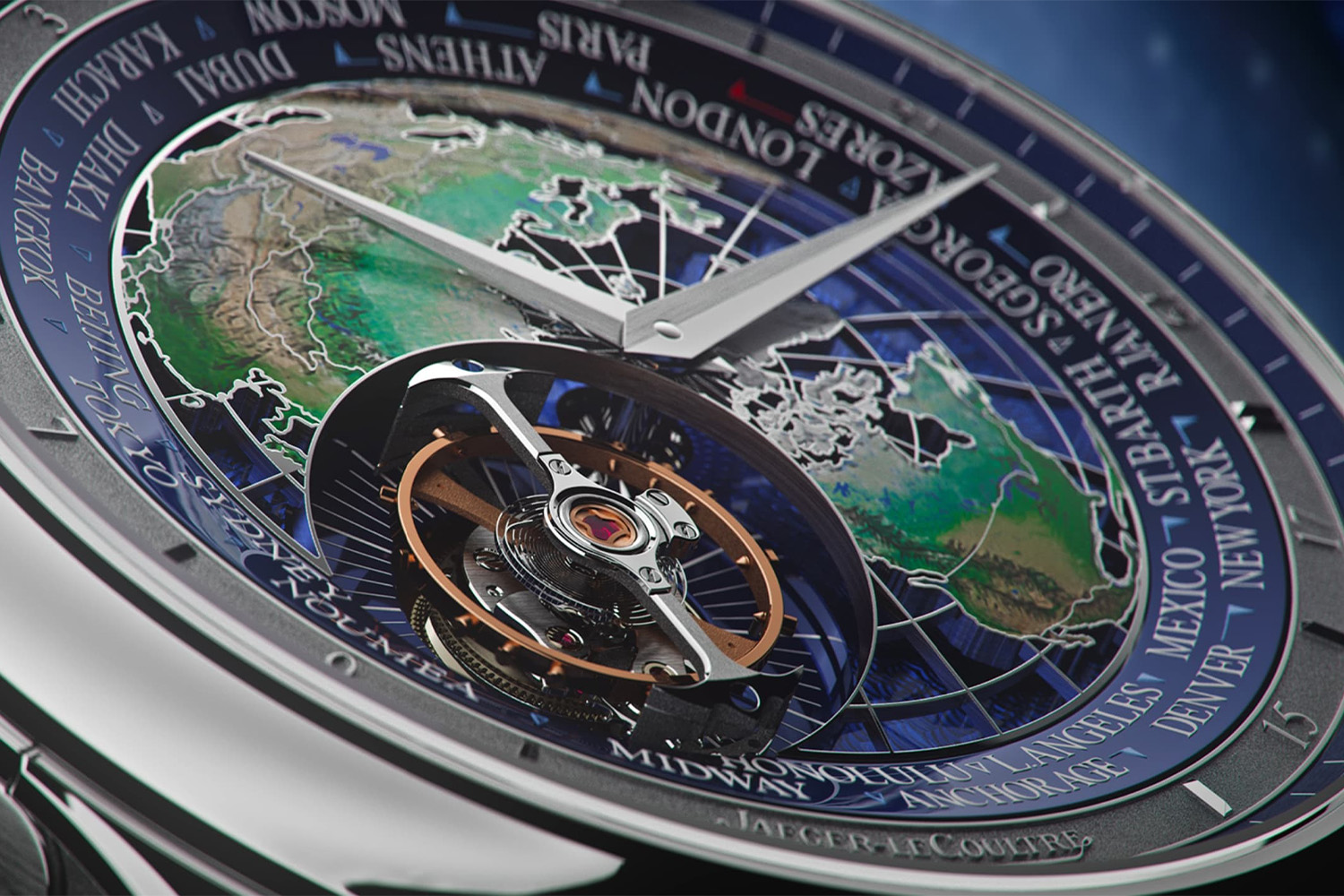
Jaeger-LeCoultre
“Le Grande Maison” truly pulled out all the stops this year. Though Jaeger-LeCoultre isn’t considered one of the “Holy Trinity” of watchmaking — that would be Patek Philippe, Audemars Piguet, and Vacheron Constantin — it’s considered the “watchmaker’s watchmaker,” beloved for its high-end complications, approachable tool watches, and absolutely iconic Reverso wristwatch and Atmos clock.
This year, JLC is focussed on celestial complications — those that track the movements of heavenly bodies. One of the stars of the show is the Master Hybris Artistica Calibre 945 (price upon request). Available in two iterations, the Artistica Galaxia and the Artistica Atomium, this bonkers timepiece displays sidereal time, or time that is correlated to distant fixed stars rather than our Sun. A celestial map at the center of the dial actually maps the movement of the night sky as seen from the latitude of JLC’s atelier in Switzerland. Like, whaaaa? Oh, also, did we mention it’s a minute repeater (i.e. it audibly chimes the time to you), and that it’s got a tourbillon (i.e. it incorporates an archaic, 18th-century device meant to ensure timekeeping accuracy in pocket watches but that largely serves today as a visual reminder of how baller a particular watchmaking company is)? Crazy.
Another star is the Master Grand Tradition Calibre 948 (price upon request). Essentially an elevated take on the world time complication — one that displays the time in different cities around the world simultaneously — it features a movement with a flying tourbillon, and a dial with an incredibly beautiful, enameled globe. An outer city ring and a case consisting of more than 80 parts complete the look.
For the first time, JLC is adding a perpetual calendar complication to the Polaris collection, its line of utilitarian sports watches. Powered by the JLC Calibre 868AA with 70 hours of power reserve, it automatically displays the correct day, date, month, phase of the moon (in both hemispheres), and year and will only need manual correction in the year 2100 if kept wound. Available in either steel (CHF 29,200 on a bracelet) or pink gold (CHF 43,700), the Polaris Perpetual Calendar measures 42mm and has to be one of the most beautiful complicated tool watches of the past 10 years. (And it ain’t easy to unseat — or join! — IWC in that department.)
This article was featured in the InsideHook newsletter. Sign up now.
